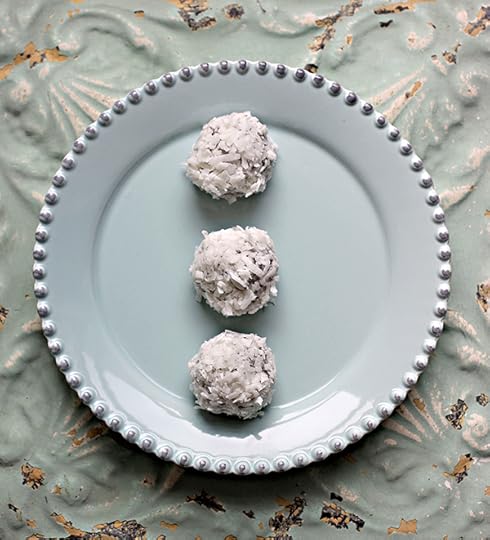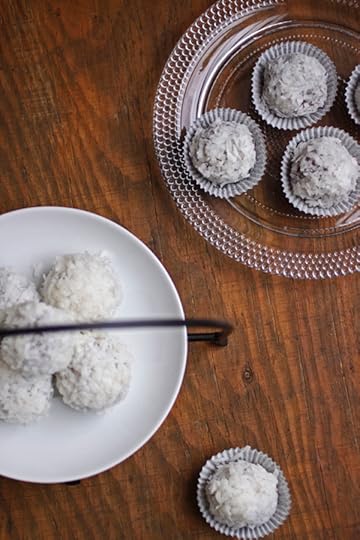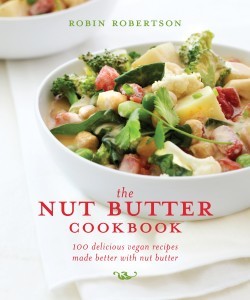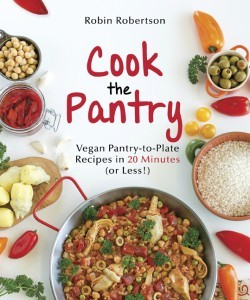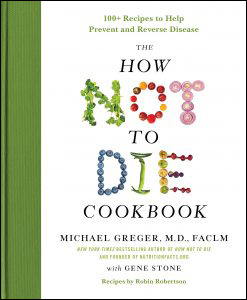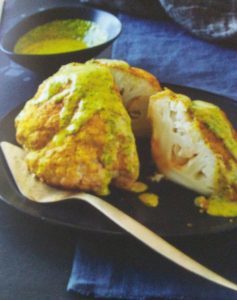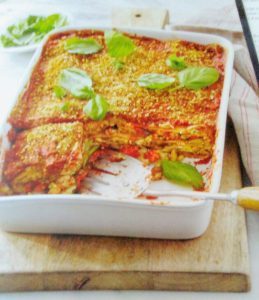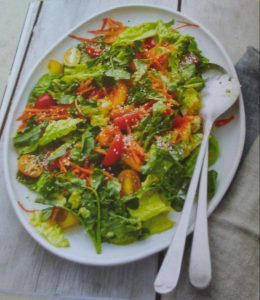Robin Robertson's Blog, page 10
December 12, 2017
Kitchen Creativity
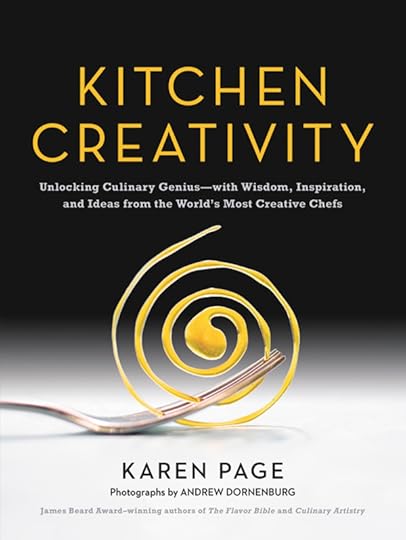
In a break from my usual recipe posts, I’d like to share an excerpt from Karen Page’s new book entitled Kitchen Creativity.
Beyond a cookbook, Kitchen Creativity is a guide to inventive cooking (without recipes!) that will inspire you to think, improvise, and cook like the world’s best chefs. Great cooking is as much about intuition and imagination as it is about flavor and technique. Kitchen Creativity gives insights into these creative processes from more than 100 top restaurant kitchens, including the Bazaar, Blue Hill, Daniel, and Dirt Candy.
Based on four years of research and dozens of in-depth interviews, Kitchen Creativity illuminates the methods of culinary invention. Part I reveals how to learn foundational skills, including how to appreciate, taste, and season classic dishes before reinventing the classics from a new perspective. Part II’s A-to-Z entries are an invaluable culinary idea generator, with exercises to prompt new recipe ideas and combinations.
While not a cookbook, nor a vegan book, for that matter (although vegan chefs and ingredients are very well represented), Kitchen Creativity has a lot to offer for cooks looking to broaden their creativity in the kitchen. The following is an excerpt from Kitchen Creativity on one of my favorite topics, umami…
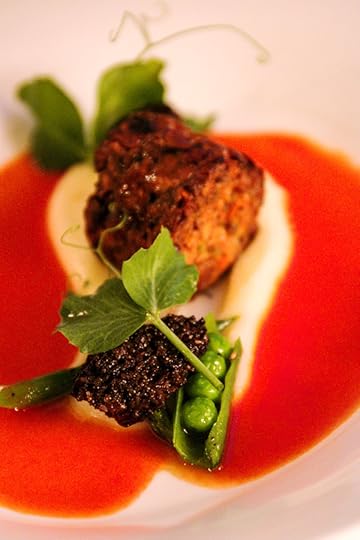
“Umami” from Kitchen Creativity by Karen Page
The taste of umami is imparted by glutamate, a type of amino acid discovered in 1908 by Dr. Kikunae Ikeda of Tokyo Imperial University. In studying kombu (kelp), Ikeda managed to isolate glutamate as its own compound, giving it the name of umami, which translates as “savoriness.” Thus, 5,000 years after the discovery of salt, and 4,000 years after the discovery of sugar, and 3,500 years after the discovery of sour (vinegar), umami is a relatively new taste concept. Japanese cooks had been using umami-rich ingredients intuitively for centuries, long before their scientific properties were discovered to enhance flavor.
While we first mentioned umami in our 1996 book Culinary Artistry, it did not begin to gain more widespread acceptance until after 2000 when glutamate receptors were discovered on the tongue. The main sources of umami are those deriving from 1) the amino acid glutamate (found in, e.g., kelp); and those deriving from 2) so-called “nucleotides”—such as a) adenylate (aka AMP, which is found primarily in fish and shellfish), b) guanylate (aka GMP, which is found primarily in plants and fungi, e.g., shiitake mushrooms, esp. dried), and c) inosinate (aka IMP, which is found primarily in meat and fish, e.g., bonito flakes).
The big umami magic happens when one or more nucleotides are combined with glutamate, as there is a synergistic affect—resulting in umami with as much as eight times the potency.
Umami Dynamics
Umami can enhance a bland dish’s appeal with mouth-filling savoriness. Umami can also enhance a dish’s perceived sweetness, while tempering its perceived bitterness. If you find yourself with too much of a good thing when it comes to umami, try balancing with salty, sweet, bitter, acidic, or piquant ingredients.
Umami is a taste that tends to linger on the palate—something referred to as a “long finish” in the wine world. Because it contributes to the qualities of deliciousness and satiation, umami is especially prized as a taste in dishes and menus.
Note: Certain herbs and spices can also emphasize a dish’s savory aspects, such as bay leaf, cumin, oregano, paprika, sage, and thyme.
Using Umami
Chefs praise black garlic (aka fermented garlic) for its ability to add depth and earthiness to dishes ranging from vegetables to meats.
If you doubt umami’s importance as one of the five primary tastes, consider the fact that leading chefs like Michael Anthony, Eric Ripert, and Jean-Georges Vongerichten believe dashi to be a key component of their cooking. Some chefs use it to replace liquids in countless preparations, from brines to broths to salad dressings.
Chefs have rising enthusiasm for all manner of fermented ingredients (e.g., fermented soybeans, kimchi, miso, pickles, sauerkraut), which bring umami to dishes including vegetables.
The corn smut known as huitlacoche is prized as a Mexican delicacy, not only by chefs cooking in the vernacular like Rick Bayless, but also mainstream chefs who find themselves using it in quesadillas, soups, and tacos. Sean Brock declares is “insanely delicious and luxurious, like black truffles.”
Kombu (aka kelp, the sea vegetable) is prized for its umami by Yoshihiro Narisawa.
Brad Farmerie is fanatical about miso, which allows him to achieve a rich mouthfeel without butter or cream. Miso is an integral part of Farmerie’s roasted chile caramel Brussels sprouts, which involve caramelizing sugar (sweet) before adding chiles (hot), cilantro stems (bitter), lime juice (sour), fish sauce (salt/umami), and miso (richness). He adds miso to sweet potatoes + brown butter + rosemary to create another dish he’s not able to take off the menu. Other chefs will add misos (e.g., white) to salad dressings or soups for an umami boost.
From his time in Japan, Michael Anthony picked up a love of “sea weeds and pickles.”
Thomas Henkelmann describes rich, flavorful stocks as “essential” for cooking in every season.
Umeboshi paste is prized by chefs, including Isa Chandra Moskowitz of Omaha’s and Brooklyn’s Modern Love, for its umami quality. Moskowitz adds it to her Caesar salad dressing for its anchovy flavor.
Even native Brits like Mark Levy fall prey to the charms of white truffles, which he prizes for their mysterious aroma and short availability.
Excerpted from Kitchen Creativity: Unlocking Culinary Genius—with Wisdom, Inspiration, and Ideas from the World’s Most Creative Chefs by Karen Page (Little, Brown, October 31, 2017).
SaveSave
SaveSave
The post Kitchen Creativity appeared first on Robin Robertson.












December 5, 2017
Vegan Chocolate Macadamia Truffles with Coconut
When you love chocolate, macadamia nuts, and coconut, there’s only one thing to do – make these decadently delicious truffles. Chocolate Macadamia Truffles with Coconut are great for holiday gift giving, and they’re a terrific addition to dessert trays at parties, too!
Chocolate Macadamia Truffles with Coconut
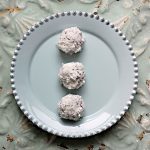
When you love chocolate, macadamia nuts, and coconut, ?there’s only one thing to do – make these decadently delicious truffles.
1 1/3 cups shredded unsweetened coconut
1/3 cup semisweet vegan chocolate chips
1/3 cup macadamia butter
3 tablespoons coconut milk
2/3 cup confectioners’ sugar
Finely chop the coconut by pulsing it in a food processor. Set aside.
Place the chocolate in a heatproof bowl and set it over a small saucepan of simmering water until the chocolate melts. (Alternatively, melt the chocolate chips by placing them in a small microwaveable bowl and microwave on high for about 1 1/2 minutes, or just until the chocolate is completely melted.) Add the macadamia butter and coconut milk and blend until smooth and creamy.
Place the chocolate mixture, sugar, and 1/3 cup of the reserved coconut into a food processor and process until well combined.
Shape the mixture into 1-inch balls and roll them in the remaining 1 cup coconut, pressing so the coconut adheres to the truffles. Place the truffles on a platter or a baking sheet. Cover and refrigerate until ready to use.
From The Nut Butter Cookbook by Robin Robertson. ©2014 Robin Robertson. Used by permission from Vegan Heritage Press. Photo by Lori Maffei.
The post Vegan Chocolate Macadamia Truffles with Coconut appeared first on Robin Robertson.












November 28, 2017
Too-Easy Chocolate-Peanut Butter Fudge
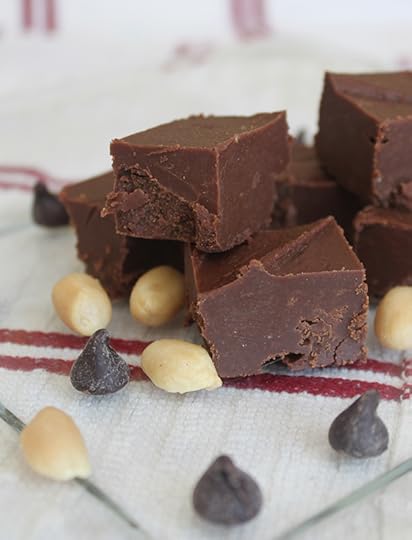 This Chocolate-Peanut Butter Fudge is too easy not to make on a regular basis! It firms up quickly, so be sure to get it into the pan right away. For a soy-free fudge, use a soy-free vegan butter.
This Chocolate-Peanut Butter Fudge is too easy not to make on a regular basis! It firms up quickly, so be sure to get it into the pan right away. For a soy-free fudge, use a soy-free vegan butter.
Too-Easy Chocolate-Peanut Butter Fudge
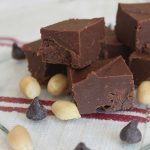
This fudge is too easy not to make on a regular basis!
8 ounces semisweet vegan chocolate. coarsely chopped, or vegan chocolate chips
1 cup peanut butter
1/2 cup vegan butter
1 cup confectioners’ sugar
1 teaspoon vanilla extract
Lightly grease an 8-inch square baking pan.
Place the chocolate, peanut butter, and butter in a heatproof bowl and set it over a saucepan of simmering water, stirring until the chocolate melts and the mixture is smooth.
Turn off the heat. Whisk in the sugar and vanilla until smooth and well blended.
Scrape the mixture into the prepared pan and cool until firm. Cut into 1 1/2-inch squares. Keep refrigerated.
From The Nut Butter Cookbook by Robin Robertson. ©2014 Robin Robertson. Used by permission from Vegan Heritage Press. Photo by Lori Maffei.
The post Too-Easy Chocolate-Peanut Butter Fudge appeared first on Robin Robertson.












November 21, 2017
Vegan Cheesy Crackers
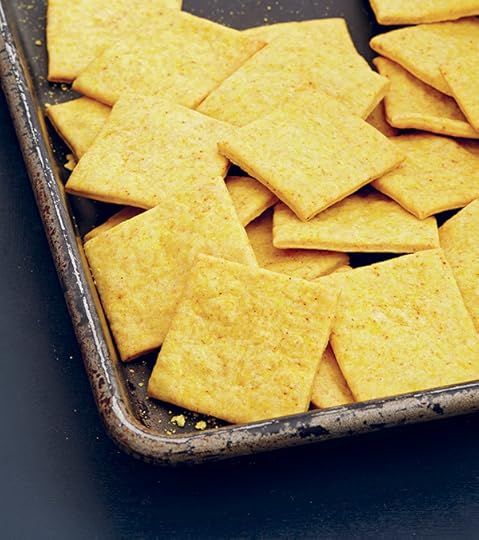 It’s easy to find crackers without animal ingredients, unless of course, your favorite crackers happen to be the cheesy ones. Now you can make vegan Cheesy Crackers at home, complete with the delicious crunch and flavor you love but without the animal ingredients and additives.
It’s easy to find crackers without animal ingredients, unless of course, your favorite crackers happen to be the cheesy ones. Now you can make vegan Cheesy Crackers at home, complete with the delicious crunch and flavor you love but without the animal ingredients and additives.
Cheesy Crackers

Now you can make vegan Cheesy Crackers at home, complete with the delicious crunch and flavor you love but without the animal ingredients and additives.
1 cup all-purpose flour
2 tablespoons nutritional yeast
½ teaspoon baking powder
½ teaspoon salt
½ teaspoon garlic powder
¼ teaspoon smoked paprika
? teaspoon turmeric
1 tablespoon olive oil
1 tablespoon vegan butter
1 teaspoon fresh lemon juice
5 to 6 tablespoons cold water, or more as needed
Preheat the oven to 350°F. In a medium bowl, combine the flour, nutritional yeast, baking powder, salt, garlic powder, smoked paprika, and turmeric. Mix well. Add the olive oil, butter, and lemon juice, mixing with a fork until the dough is fine and crumbly. Add the water a tablespoon at a time until the dough becomes cohesive.
Transfer the dough to a piece of parchment paper large enough to fit a large rimmed baking pan. (You can use a Silpat instead, if you have one.) Top the dough with another sheet of parchment paper and roll out the dough until thin, measuring about 11 x 13 inches. Transfer the parchment paper and rolled-out dough to a large rimmed baking sheet. Remove the top sheet of parchment paper and cut the rolled dough into 2-inch squares. If desired, remove any uneven pieces of dough from around the edges and press together into a small disk and roll it out to get more crackers that are a uniform size. (Otherwise, you’ll have a few partial crackers from around the end to nibble on!)
Bake for 15 to 17 minutes, or until the crackers are baked but not browned. The color should be golden. Cool completely on the baking sheet. These crackers keep well for a week in a sealed container at room temperature.
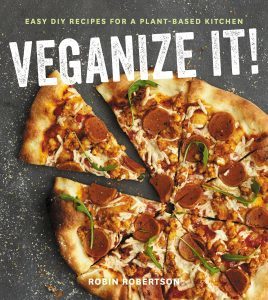 Text excerpted from VEGANIZE IT! © 2017 by Robin Robertson. Reproduced by permission of Houghton Mifflin Harcourt. All rights reserved. Photo by William and Susan Brinson.
Text excerpted from VEGANIZE IT! © 2017 by Robin Robertson. Reproduced by permission of Houghton Mifflin Harcourt. All rights reserved. Photo by William and Susan Brinson.
SaveSave
The post Vegan Cheesy Crackers appeared first on Robin Robertson.












November 14, 2017
Easy as Chocolate Pie
 This decadent vegan chocolate pie assembles in minutes. After some time in the fridge, it’s ready to serve. What can be easier than that?
This decadent vegan chocolate pie assembles in minutes. After some time in the fridge, it’s ready to serve. What can be easier than that?
Easy as Chocolate Pie
This decadent chocolate pie assembles in minutes.
12 ounces vegan semisweet chocolate chips
1/4 cup almond milk or other nondairy milk
1 tablespoon coconut oil
1/2 cup chopped nuts, optional
1/2 cup sweetened dried cranberries, cherries, or blueberries (optional)
1 vegan chocolate cookie crust ((Keebler’s brand is vegan-friendly))
Chocolate curls or chopped nuts, for garnish
In a saucepan, combine the chocolate chips, almond milk, and coconut oil over medium heat. Cook, stirring until the chocolate and coconut oil are melted. Stir in the nuts and dried fruit, if using, until well combined.
Transfer the chocolate mixture to the crust and spread evenly. Refrigerate for at least 3 hours to firm up before serving. Garnish the top with chocolate curls.
Recipe from Cook the Pantry © 2015 by Robin Robertson. Photo by Annie Oliverio. Used by permission Vegan Heritage Press LLC.
SaveSave
The post Easy as Chocolate Pie appeared first on Robin Robertson.












November 10, 2017
The How Not to Die Cookbook
It gives me great pleasure to announce the upcoming release of The How Not to Die Cookbook by Michael Greger with Gene Stone — especially because the recipes are by yours truly. The book comes out of December 5th, but you can pre-order now.
The recipes in the book are based on Dr. Greger’s best-selling book, How Not To Die, and feature a variety of whole foods plant-based recipes, including Whole Roasted Cauliflower with Lemon Tahini Sauce:
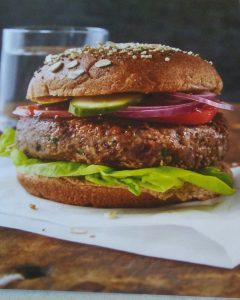 and Super Salad with Garlic Caesar Dressing:
and Super Salad with Garlic Caesar Dressing:
If you’ve been wondering how to incorporate more of Dr. Greger’s “Daily Dozen” into your diet, then The How Not to Die Cookbook is the cookbook for you.
The post The How Not to Die Cookbook appeared first on Robin Robertson.












November 7, 2017
Stuffed Squash with Brazil Nuts and Pistachios
 This flavorful and colorful Stuffed Squash with Brazil Nuts and Pistachios makes an attractive entrée for a Thanksgiving dinner. Use a dense, sweet, orange-fleshed squash such as buttercup, acorn, or kabocha for the best results with this recipe. I like to use Brazil nut butter, but you can use any type of nut butter that you prefer.
This flavorful and colorful Stuffed Squash with Brazil Nuts and Pistachios makes an attractive entrée for a Thanksgiving dinner. Use a dense, sweet, orange-fleshed squash such as buttercup, acorn, or kabocha for the best results with this recipe. I like to use Brazil nut butter, but you can use any type of nut butter that you prefer.
Stuffed Squash with Brazil Nuts and Pistachios
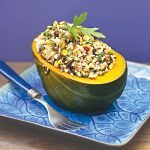
This flavorful and colorful Stuffed Squash makes an attractive entrée for a Thanksgiving dinner.
1 tablespoon olive oil or 1/4 cup water
1 yellow onion, minced
2 cloves garlic, minced
2 cups cooked brown rice
1 cup cooked wild rice
1/3 cup Brazil nut butter
1/4 cup sweetened dried cranberries
2 tablespoons chopped pistachio nuts
2 tablespoons chopped Brazil nuts
1 tablespoon minced fresh parsley
1 teaspoon dried tarragon
Salt and ground black pepper
1 large winter squash, halved and seeded (such as buttercup, acorn, or kabocha)
1 1/2 cups hot water
Preheat the oven to 350°F. Heat the oil or water in a large skillet over medium heat. Add the onion, cover, and cook until softened, about 5 minutes. Add the garlic and cook until fragrant, about 30 seconds.
Stir in the rice, wild rice, Brazil nut butter, cranberries, nuts, parsley, tarragon, and salt and pepper to taste. Mix well and spoon the mixture into the squash cavities
Place the squash halves in a baking dish, stuffing sides up. Add the water to the bottom of the baking dish and cover tightly with a lid or aluminum foil. Bake until the squash is tender, about 1 1/2 hours.
From The Nut Butter Cookbook by Robin Robertson. ©2014 Robin Robertson. Used by permission from Vegan Heritage Press. Photo by Lori Maffei.
SaveSave
The post Stuffed Squash with Brazil Nuts and Pistachios appeared first on Robin Robertson.












October 31, 2017
West African Vegetable Stew
This flavorful West African Vegetable Stew is especially good served over rice or couscous or with coarse whole grain bread. Like most stews, this one tastes even better the second day, so make it ahead. The crops of peanuts (or groundnuts), sweet potatoes (or yams), and okra can be found throughout western African countries, where stews such as this are often called groundnut stew.
West African Vegetable Stew
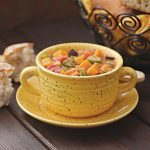
Brimming with vegetables, this flavorful stew is especially good served over rice or couscous or with coarse whole grain bread.
1 tablespoon neutral vegetable oil or 1/4 cup water
1 large yellow onion, chopped
1 sweet potato, peeled and diced
1 green bell pepper, chopped
1 medium eggplant, diced
1 cup sliced okra, fresh or frozen
1 clove garlic, minced
1 14.5-ounce can diced tomatoes, undrained
1/2 cup peanut butter
1 1/2 cups vegetable broth
1/4 teaspoon cayenne, or to taste
1/2 teaspoon salt
1/8 teaspoon ground black pepper
Heat the oil or water in a large saucepan over medium heat. Add the onion, sweet potato, and bell pepper and cook for 5 minutes. Stir in the eggplant, okra, and garlic. Cover and cook 5 minutes longer, then stir in the tomatoes and cook for a few minutes.
In a small bowl, combine the peanut butter and broth, stirring until smooth. Stir the peanut butter mixture into the stew and season with cayenne, salt, and pepper. Simmer until the vegetables are tender, about 30 minutes.
For a thicker consistency, scoop out about 1 cup of the stew and puree it in a blender or food processor, then return it to the pot.
From The Nut Butter Cookbook by Robin Robertson. ©2014 Robin Robertson. Used by permission from Vegan Heritage Press. Photo by Lori Maffei.
The post West African Vegetable Stew appeared first on Robin Robertson.












October 24, 2017
Chipotle Corn Chowder
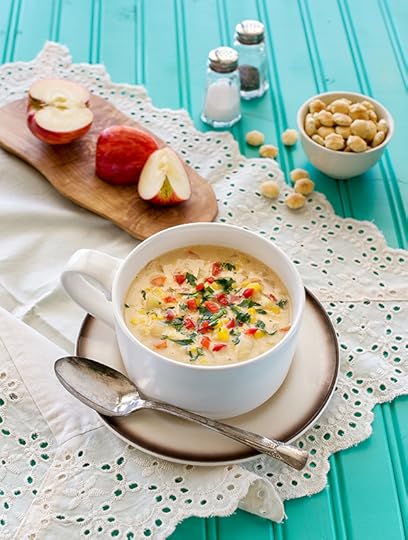 This sweet, satisfying Chipotle Corn Chowder is made with frozen whole kernel corn. The garnish of pimientos and parsley adds a dash of color.
This sweet, satisfying Chipotle Corn Chowder is made with frozen whole kernel corn. The garnish of pimientos and parsley adds a dash of color.
Chipotle Corn Chowder
1 tablespoon safflower oil
1 medium onion, minced or shredded
1 carrot, finely chopped or shredded
1 russet potato, finely chopped or shredded
1/4 teaspoon celery salt
2 cups vegetable broth
1 16-ounce bag frozen corn kernels
Salt and ground black pepper
1/2 teaspoon ground coriander
1/2 teaspoon liquid smoke
2 cups plain unsweetened almond milk
1/2 cup raw cashew pieces, soaked for 3 hours, then drained
1 chipotle chile in adobo sauce
2 tablespoons minced fresh parsley
1 2-ounce jar chopped pimientos, drained
Heat the oil in a large saucepan over medium heat. Add the onion, carrot, and potato. Cover and cook for 4 minutes to soften. Stir in the celery salt, broth, corn, and salt and pepper to taste. Bring to a boil, then reduce the heat to a simmer, stir in the coriander, liquid smoke, and almond milk, and cook, stirring frequently, for 5 minutes.
While the soup is simmering, combine the drained cashews and chipotle in a blender with 1 cup of the simmering broth from the soup. Blend until smooth and creamy, then add 1 more cup of the soup and blend until smooth. Stir the mixture back into the soup. Taste and adjust the seasonings. Ladle the soup into bowls and garnish with parsley and pimientos.
Recipe from Cook the Pantry © 2015 by Robin Robertson. Photo by Annie Oliverio. Used by permission Vegan Heritage Press LLC.
SaveSave
The post Chipotle Corn Chowder appeared first on Robin Robertson.












October 16, 2017
Vegan Peanut Butter Cups
 For bite-size versions of these delicious vegan Peanut Butter Cups, use small paper candy cups instead of the cupcake liners. To make these soy-free, use a soy-free vegan butter.
For bite-size versions of these delicious vegan Peanut Butter Cups, use small paper candy cups instead of the cupcake liners. To make these soy-free, use a soy-free vegan butter.
Peanut Butter Cups
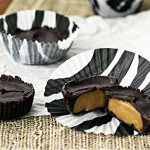
1/2 cup vegan butter
1 cup peanut butter
1/2 teaspoon vanilla extract
3/4 cup confectioners’ sugar
16 ounces semisweet vegan chocolate chips
Melt the butter in a medium-size saucepan over low heat. Stir in the peanut butter and vanilla until well blended. Remove from the heat and stir in the sugar. Mix well until thoroughly combined, then refrigerate.
Place the chocolate chips in a heatproof bowl and set it over a saucepan of simmering water until the choco- late is melted.
Use a small brush to coat the chocolate over the bot- tom and about 1/2 inch up the sides of 18 paper cup- cake liners. Reserve the remaining chocolate. Refrig- erate the cups until firm, about 10 minutes.
Scoop out about 1 1/2 tablespoons of the peanut but- ter mixture and shape into a ball. Flatten the ball into a disc and place inside one of the chilled chocolate- lined cups. Repeat until all the cups are filled. Spoon the remaining 2 teaspoons melted chocolate over the tops of each cup. Refrigerate until firm.
Variation: Use vegan white chocolate chips to make White Chocolate Peanut Butter Cups.
From The Nut Butter Cookbook by Robin Robertson. ©2014 Robin Robertson. Used by permission from Vegan Heritage Press. Photo by Lori Maffei.
SaveSave
The post Vegan Peanut Butter Cups appeared first on Robin Robertson.












Robin Robertson's Blog
- Robin Robertson's profile
- 59 followers


